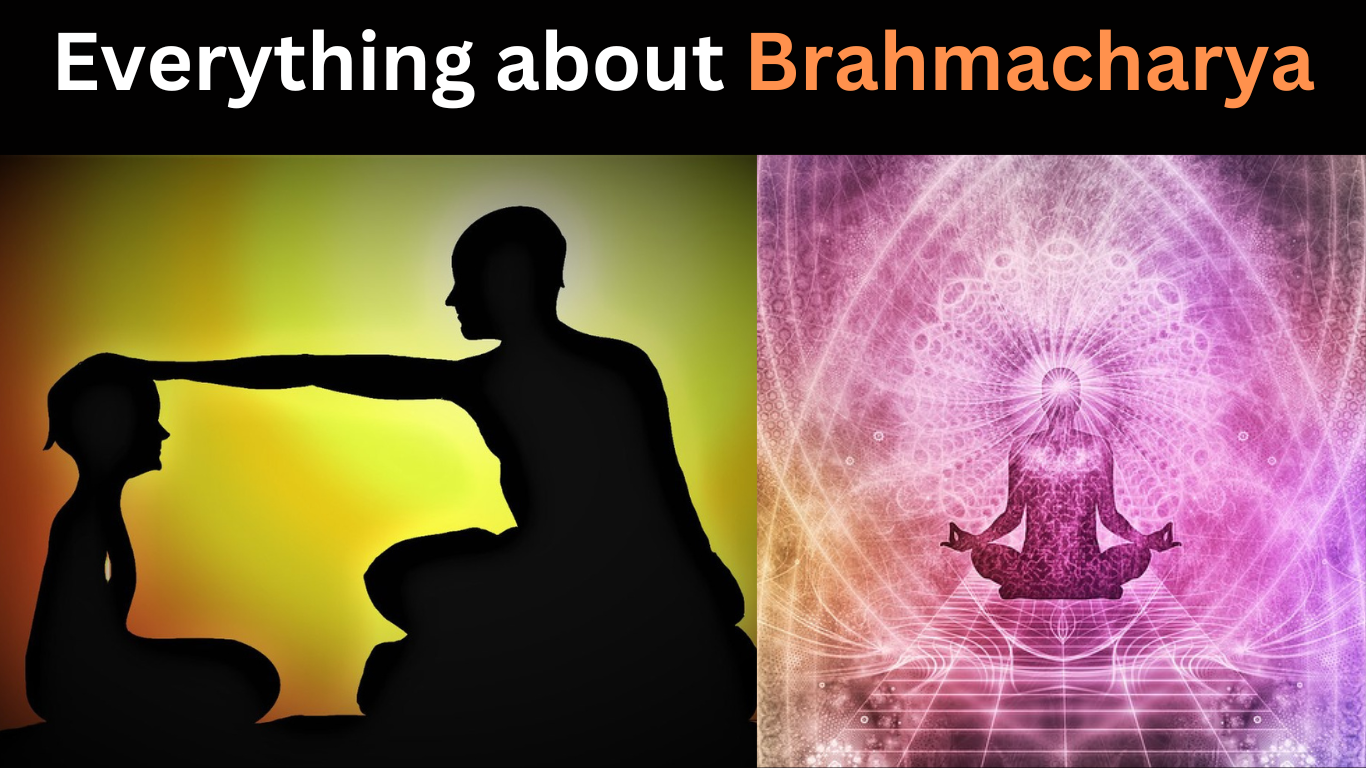Everything about Brahmacharya

The topic of discourse is brahmacharya. Before we delve into the various rules and differences between different forms of it. First, the meaning and importance of brahmacharya shall be discussed.
Meaning of Brahmacharya
From the perspective of vyakaran (Hindi grammar), Brahmacharya is basically the conduct that causes growth in the person. Regarding this, the question arises as to what kind of growth will become clear when the importance of brahmacharya is discussed.
Some people infer that brahmacharya is the conduct of Brahman; others even go as far as to say that brahmacharya is the conduct of Parabrahm. But neither of these is true. Brahmacharya is one of the four ashramas and is something available to people of all varnas, albeit with some minor differences for what they are taught during this period.
From the overall perspective of the four actual ashramas, it’s stated in the Shastras that if one isn’t a virgin and doesn’t practice brahmacharya, they must do Prayaschit before marriage.
In some cases, marriage is altogether forbidden for those who don’t follow proper brahmacharya, and in others, such as in the case of Kaulas, the Sadhak is barred from a particular Bhairavi sadhana.
Importance of Brahmacharya
Maintaining brahmacharya is necessary for the Vaidikas, as that’s one of the requisites to performing karma kandas. The same importance is present in Vaishnava, Shaiva, and Dakshinachara.
For the yogis and sects such as Aghor, Kalamukh, and Kapalik Margas, brahmcharya is important as they need to perform specific Vratas that extend up to 12 years, and during this period they must maintain brahmacharya in order to progress to having the adhikar of Maithun Makar.
From the perspective of Varnashram, brahmacharya is the pivotal point of all the other ashramas; it’s necessary to follow and cross the Brahmacharya ashram to become a successful grihastha.
In certain tantras, it’s stated that there’s no brahmacharya ashram in Kaliyug, and there’s a Vidhan that in Kaliyug, there’s no vanaprastha and no brahmcharya either; there are just grihastha sanyas and Abhdoot.
Here, the question may arise: how exactly can brahmcharya be done away with as an ashram, yet some of its aspects are preserved? This shall be answered while discussing Sadharan(SIMPLE) and visesh(Important) dharma with Brahmacharya.
Rules of brahmcharya:
- With respect to dress codes, proper dress codes must be observed by the people according to their varnas, and if that’s not possible, they should at least wear stitched clothes and be of the right color.
- For what one must do during this time, the rule is to learn the shastras one is permitted to and to also learn the duties of one’s varna and the works associated with them, basically vocational training and dharma gyaan.
- For food, they must avoid anything that grows underground, such as carrots, potatoes, onions, garlic, and ginger. Honey, ghee, meat, and herbs such as shilajit are also forbidden during this period. Alcohol is also forbidden.
- With respect to interaction, one shouldn’t interact with the opposite gender at all during this period, or at least try as best as possible to avoid the ones of the opposite gender, even from their own family.
- For conduct, one must always be clean and serve the guru. They should avoid sex completely during this period and even ensure that they don’t lose their sexual fluids, even if it’s due to Swapna dosh (Nightfall); otherwise, Prayaschit (atonement) should be done.
Other Rules
The brahmachari isn’t allowed to earn; he must beg for food and eat whatever he obtains, provided the food he gets isn’t forbidden to him.
They should only practice and perfect their vocation and not try to earn money out of it during this ashram.
Masturbation, lustful thoughts, watching others have sex—all these are forbidden acts.
As observed, it’s impossible to maintain most of these rules during kaliyug; one has to interact with the opposite gender even before age; one has to wear stitched clothes; and gurukuls hardly exist anymore.
One also needs to earn money, often before age, and there are hardly any gurus who teach dharma. Keeping such things in mind, it was stated in tantras that in Kaliyug there’s no Brahmcharya Ashram.
However, this doesn’t mean that we have a free pass to waste our semen or indulge in unnecessary blog vilash.
What Tantra say about Brahmacharya
In tantras that use Panchamakaras, it’s stated that they should be used only for ritual purposes and not for animalistic enjoyment of the senses alone. One who abuses the Makaras through overconsumption is immediately thrown out and sometimes even killed by the guru.
Now we come across another major concept: how brahmcharya is maintained even without being in a brahmcharya ashram.
For the Vaidikas, madya, and mudra are forbidden, and maas and Matsya are to be consumed only when it’s Bali Prashad. For having sex, it should be done only to beget children and not out of lust. By maintaining these rules, the performer is said to be in a brahmcharya ashram, even though he is in a grihastha Jeevan.
While in vama, etc., margas, all five makaras are allowed, but it’s stated that one must strictly observe the rules of using the makaras and must never engage in wrongful or overconsumption. Thus, the grihastha is also given the title of Brahmachari.
It’s also crucial to note that brahmcharya is not simply semen retention. While semen retention is one of its many rules, that alone isn’t the only thing, and several other rules must be observed.